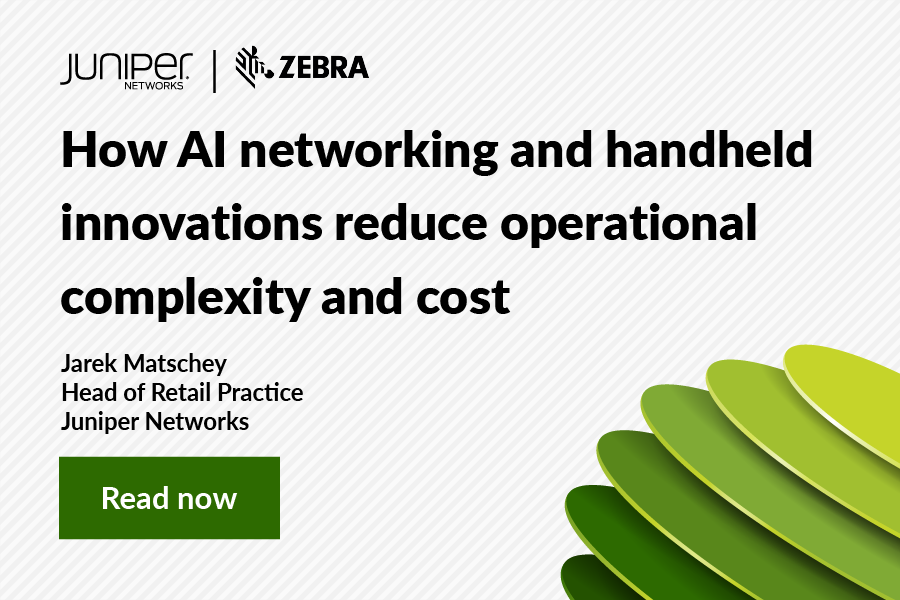It used to be that having a network that was up and running was the key priority for IT teams to worry about. Now, it’s the overall quality of the end-user experience. For retailers, assured network and application performance has become critical to successfully delivering modern shopping experiences.
Delivering Seamless Customer Experiences
Boundaries between virtual and physical stores are disappearing as services merge to deliver a seamless consumer journey. For example, a customer can order a latte and pay for it on their smartphone as they walk down the street, so the barista has it ready for them by the time they arrive at the coffee shop.
Customers now have myriad choices for how and where they shop. While the omnichannel approach to retailing has been around for a while, over the last year people have used a much wider range of channels than ever before – not just for research, but also for viewing, selection, purchase, and delivery or collection.
Network Infrastructure is Fundamental to CX
IT infrastructure is now as important to delivering a great customer experience (CX) as having clean stores, stocked shelves, and smiling, knowledgeable staff. Retail networks support the applications used by employees to keep stores operating smoothly (for example, for stock checking, pricing, and ordering). They must also support flawless delivery of services to customers who are now relying on their smartphones to augment or improve their in-store shopping experience, using virtual assistants, endless aisles, scanning, congestion alerting, self-checkout, and more. This means that multiple applications must be available to large numbers of people who are connecting to the network with various devices, all at the same time.
Measurement is Essential to Management
Now that online services are being used at multiple touchpoints in the customer journey, they need to be measured and managed with the same diligence as every other CX aspect of the store. IT teams must be able to understand network performance from the perspective of every user. Are SLAs being met? If not, why, and what can be done in remediation?
If customers are let down by their online experience, this is usually worse than having no app at all. If that latte isn’t on the counter when the customer walks in, a wait is bad enough. But if the coffee shop has no record of the order because the app failed in some way, then the customer doesn’t just need to re-order, they also need to find out what happened to their first payment. Did it go through? How can they get a refund? What should have been a convenience becomes a hassle, leaving the customer disillusioned and creating a negative impression that they could easily share within seconds (complete with in-the-moment emotion) through social media and other public platforms.
Similarly, offering self-scanning capability becomes a liability if the app crashes when a customer is halfway round the store and needs to start all over again. This is why visibility is so important: the ability to understand application performance at a per-customer level enables IT teams to resolve problems swiftly and effectively, helping to prevent this type of service failure and sustain customer satisfaction.
Visibility into Anomalies is a Significant Advantage
“The visibility into the client experience with the Juniper platform is significantly better than what we had before.”
—Matthew Draycott, Infrastructure and Operations Manager, Dunelm
Juniper Mist enables the definition of SLAs per application, then measures performance to ensure they are being met. The platform sends an alert if there is any sign of a problem that cannot be automatically remediated by Marvis, the AI-driven Virtual Network Assistant. Being able to pinpoint and resolve issues in real time – and remotely – dramatically reduces mean time to repair (MTTR) and often prevents a problem from becoming apparent to the end users. The network will display results on an easy-to-read dashboard, and because Juniper uses an open API architecture, the platform can be easily integrated with existing store operations systems.
One of the biggest benefits of this approach for IT operations is removing the need for a team member to travel to the store and attempt to recreate the same issue with the same device. Before the advent of the Juniper network driven by Mist AI, it would take far longer to find and recreate an issue than to fix it. Because the network platform captures the relevant packets, the data can be studied and common factors identified, and the problem quickly solved.
“Historically, when we had a problem with a Wi-Fi device, we had to replicate the issue in the same location, with the same device. Now we can quickly look at the Juniper Mist dashboard and see if it’s a signal problem.”
—Matthew Draycott, Infrastructure and Operations Manager, Dunelm
Network assurance relies on being able to see exactly what’s happening on the client device, and on having visibility across the complete client-to-cloud experience. Juniper’s Self-Driving Network™ combines visibility, measurement, AI, and automation to deliver that assurance: securely underpinning the customer journey to achieve the best possible CX to drive sales, loyalty, and customer lifetime value.
Join us on 9 June at the Juniper Virtual Summit for Retail to gain insight from tech experts, retail specialists and analysts, and discover how the network is key to delivering connected customer experiences across the entire omnichannel journey. See the agenda and register now.


